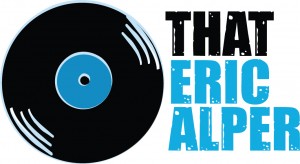You think you know Achtung Baby. You’ve blasted “One” on late-night drives, jumped around to “Mysterious Ways,” and marveled at Bono’s transformation into The Fly. But did you know that U2 nearly broke up while making it? Or that a car from the album cover would become part of their most ambitious tour ever? Released in 1991, Achtung Baby wasn’t just a new album—it was a complete reinvention, tearing apart everything U2 had built in the ’80s and making something darker, stranger, and bolder. Here are five things you probably didn’t know about Achtung Baby—the record that changed U2 forever.
1. The Berlin Sessions Were a Disaster—Until “One” Saved the Band
In late 1990, U2 set up shop at Hansa Studios in Berlin, hoping to capture the energy of a newly reunified Germany. Instead, they found themselves in a cold, uninspiring city, struggling to write songs and fighting over their musical direction. Bono and The Edge wanted to dive into industrial and electronic influences, while Larry Mullen Jr. and Adam Clayton leaned toward classic rock. The tension was so bad, the band nearly called it quits. But during a jam session, The Edge stumbled upon a new chord progression, and within minutes, the band had written “One.” The song wasn’t just a breakthrough—it was a lifeline. Without it, Achtung Baby might never have been finished, and U2 might not have made it out of the ’90s intact.
2. The Album Title Came From a Joke—But It Was Dead Serious
U2 had been toying with names like Man (a nod to their 1980 debut Boy) and even 69, but they landed on Achtung Baby—a German phrase meaning “Attention, baby!”—as a tongue-in-cheek way to signal their sonic shift. The phrase reportedly came from either sound engineer Joe O’Herlihy’s studio banter or a Mel Brooks reference. But the irony of the title masked the album’s deeper themes of love, betrayal, and reinvention. Bono later admitted, “It’s probably the heaviest record we’ve ever made … but calling it Achtung Baby threw people off.” Classic U2—serious and self-deprecating in equal measure.
3. “The Fly” Was Inspired by a Pair of Cheap Sunglasses
Bono’s Fly persona—leather-clad, bug-eyed, whispering rock-star clichés—was born out of pure studio spontaneity. The turning point came when wardrobe assistant Fintan Fitzgerald handed Bono a pair of oversized wraparound sunglasses. The moment he put them on, everything changed. Suddenly, he had a character that could say all the things he wasn’t comfortable saying as “Bono from U2.” The Fly would go on to define the Zoo TV Tour, introducing audiences to a more ironic, chaotic, and self-aware U2. The song itself? A wall of distorted guitars, hip-hop beats, and a whispered warning from the underworld.
4. The Achtung Baby Cover Features a Stolen Car and a Naked Adam Clayton
The album’s chaotic, collage-style cover was a deliberate break from U2’s usual serious, monochrome aesthetic. Shot by Anton Corbijn, it featured vibrant photos of the band, a surreal shot of Bono kissing The Edge, and—most famously—a bright blue East German Trabant car, a leftover relic from the Berlin Wall era. The band became so obsessed with the car that they used real Trabants as stage lights on the Zoo TV Tour. Oh, and the original cover also featured a naked photo of Adam Clayton on the back—until U.S. retailers complained, and a black X had to be slapped over his, well, achtung.
5. The Zoo TV Tour Was Unlike Anything Rock Had Ever Seen
The Joshua Tree tour made U2 the biggest band in the world, but Zoo TV made them the weirdest. Instead of earnestness, they embraced absurdity. Instead of one big screen, they flooded the stage with dozens of flickering TV monitors. Fake phone calls, alter egos, prank calls to the White House—it was part concert, part performance art. The scale was so ambitious that the tour grossed $151 million, with U2 playing to over 5.3 million fans. But it wasn’t just a spectacle—it was a critique of media overload, wrapped in rock-star excess.
Rock and roll is about reinvention. The Beatles had Sgt. Pepper’s, Bowie had Ziggy Stardust, and U2 had Achtung Baby. This was an album seeped in a demolition and a rebirth. The band went into the ’90s feeling lost, and they came out of it with an album that shattered expectations. It gave us a new U2—messier, louder, funnier, and maybe even better. Thirty years later, Achtung Baby still sounds like the future. It’s the sound of four men chopping down The Joshua Tree—and planting something even wilder in its place.







